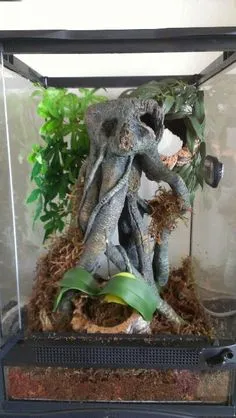Tarantula Enclosure What to Consider
Choosing the right tarantula enclosure is crucial for the health, well-being, and longevity of your eight-legged friend. A well-designed enclosure provides a safe and comfortable environment, allowing your tarantula to thrive. Several factors come into play when selecting an enclosure, including the size of the tarantula, its species-specific needs, and the environmental conditions required to mimic its natural habitat. This guide will walk you through the essential considerations to make when choosing the best tarantula enclosure for your pet.
Size Matters for Your Tarantula Enclosure
One of the most critical aspects of tarantula enclosure selection is the size. The enclosure should be large enough to provide ample space for the tarantula to move around, molt, and exhibit natural behaviors. However, it shouldn’t be excessively large, as this can make it difficult for the tarantula to find food and feel secure. A general rule of thumb is to provide an enclosure that is at least three times the tarantula’s leg span in width and length. The height should be sufficient to allow for burrowing, if applicable, and to accommodate any decorations or climbing structures. Remember, providing the right amount of space is important for their well-being.
Enclosure Size for Different Tarantula Species
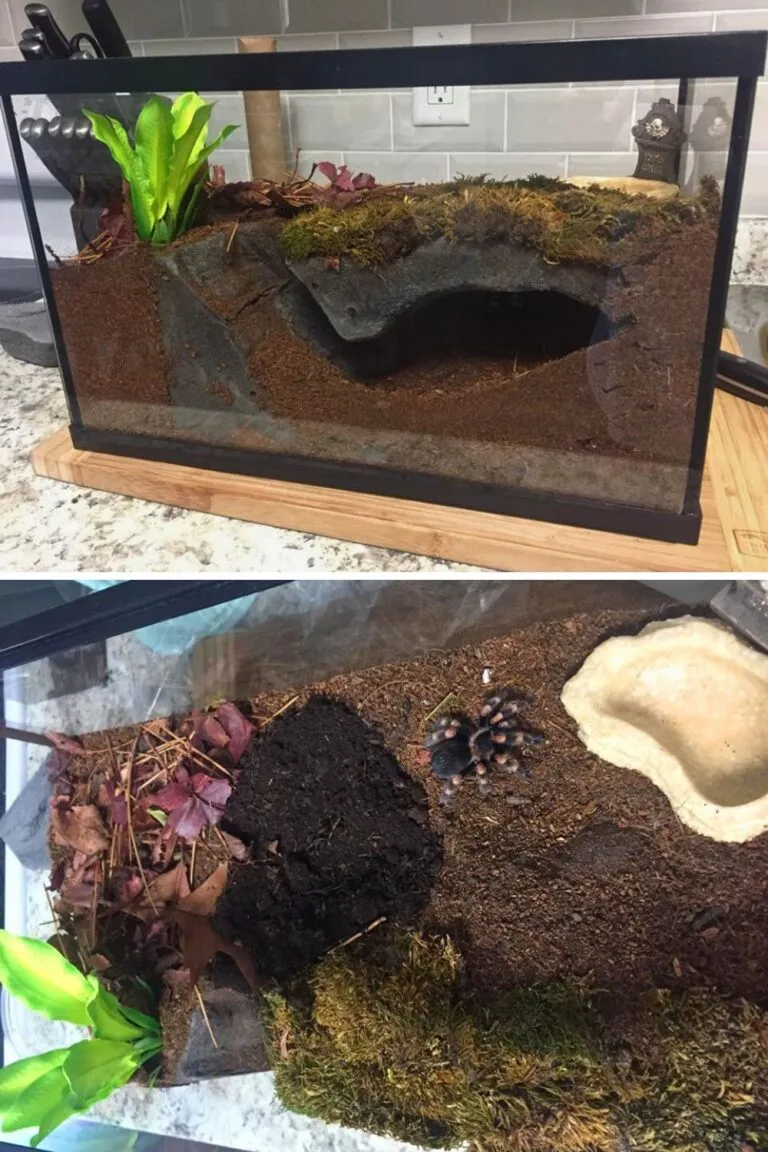
Different tarantula species have varying needs when it comes to enclosure size. Terrestrial species, which spend most of their time on the ground, typically require a wider enclosure with more floor space. Arboreal species, on the other hand, are adapted to living in trees and will benefit from a taller enclosure with more vertical space for climbing. For example, a juvenile Chilean Rose Hair tarantula (Grammostola rosea) might thrive in a 5-gallon tank, while a fully grown Goliath Birdeater (Theraphosa blondi), one of the largest tarantula species, will need a significantly larger enclosure, possibly a 20-gallon or larger tank. Researching the specific needs of your tarantula species is essential before making a purchase. This will ensure you’re giving them the space they need. (Image: tarantula-species-size.webp)
Ventilation Crucial for Tarantula Enclosures
Proper ventilation is vital for maintaining a healthy environment within your tarantula’s enclosure. Good airflow prevents the buildup of harmful gases, reduces the risk of mold and mildew growth, and helps regulate humidity levels. Stagnant air can lead to respiratory problems and other health issues for your tarantula. The enclosure should have ventilation holes or a screen top to allow for adequate air circulation. The placement and size of these vents are critical to ensure they are effective without compromising the security of the enclosure, preventing escapes. You must keep a close watch over the conditions in the enclosure to ensure your tarantula thrives. (Image: tarantula-enclosure-ventilation.webp)
Ventilation Methods for Tarantula Enclosures
There are several methods to achieve good ventilation in a tarantula enclosure. Screen tops are a popular choice, as they allow for excellent airflow and often come with built-in ventilation. Side vents, either in the form of drilled holes or mesh panels, can also be effective, but it’s essential to ensure they are appropriately sized and positioned to avoid drafts. The specific ventilation needs will depend on your tarantula’s species and the climate you live in. Some keepers also incorporate small fans or air purifiers in the room to improve air circulation, but this isn’t always necessary, especially if the enclosure has adequate ventilation.
Substrate Selection for Tarantula Enclosures
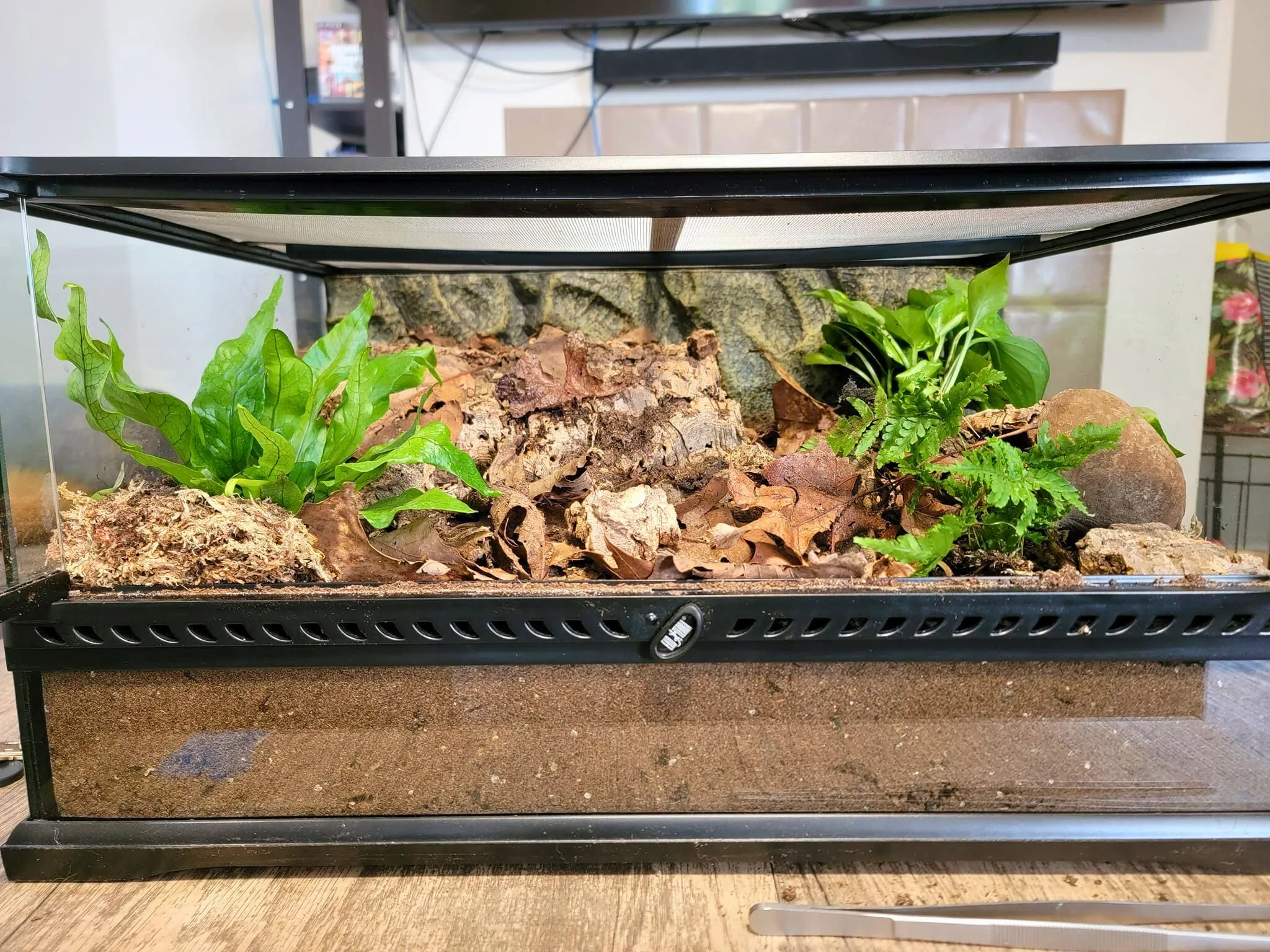
The substrate, or bedding, in your tarantula’s enclosure plays a crucial role in its comfort, health, and overall well-being. The substrate provides a surface for the tarantula to walk on, burrow in (for terrestrial species), and helps maintain humidity levels. The ideal substrate should be absorbent, non-toxic, and free of any sharp objects or chemicals that could harm your tarantula. The best option is to choose a substrate that mimics their natural habitat, providing them with a sense of security and enabling them to express their natural behaviors. (Image: tarantula-substrate-options.webp)
Substrate Types and Their Suitability
Several types of substrates are suitable for tarantula enclosures. Coconut fiber (coir) is a popular choice due to its excellent moisture-retaining properties and natural appearance. Sphagnum moss can be added to boost humidity. A mix of peat moss and vermiculite is also a good option. Avoid using substrates like cedar or pine shavings, as they can release harmful oils and chemicals. The best substrate depends on the tarantula species and its specific humidity needs. Always research what your tarantula needs. Some keepers like to use a mix of substrate types to accommodate the needs of their pet.
Temperature and Humidity Control in Enclosures
Maintaining the correct temperature and humidity levels is essential for your tarantula’s health. Tarantulas are ectothermic, meaning they rely on external sources to regulate their body temperature. Each species has specific temperature and humidity requirements. A thermometer and hygrometer should be used to monitor the environment regularly. Providing the correct environmental conditions can mean the difference between a healthy and unhealthy tarantula. Make sure you are providing the right levels for your pet’s specific needs.
Heating Options for Tarantula Enclosures
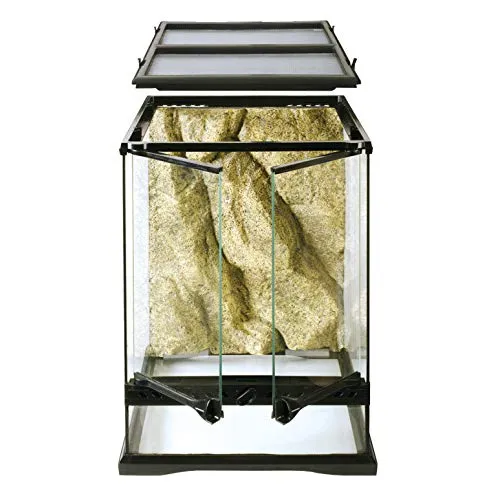
Heating options include heat lamps, heat pads, and ceramic heat emitters. Heat lamps should be used with caution, as they can dry out the enclosure if used improperly. Heat pads, placed on the side of the enclosure, are generally a safer option, especially when combined with a thermostat to regulate the temperature. Ceramic heat emitters can also be used to provide a constant source of heat without emitting light, which is ideal for nocturnal tarantulas. It is important to avoid using any heat source that can directly burn your tarantula. (Image: tarantula-heating-setup.webp)
Humidity Control Tips for Tarantulas
Humidity levels can be controlled by misting the enclosure with water, providing a water dish, and adjusting the substrate. The frequency of misting depends on the species and the humidity levels needed. A shallow water dish should always be available. The substrate helps to retain moisture and should be kept slightly damp, but not waterlogged. Proper ventilation also plays a role in managing humidity, preventing it from becoming too high and causing mold growth. Regular monitoring is key to maintaining the right humidity. (Image: tarantula-humidity-control.webp)
Decorating Your Tarantula Enclosure
Decorating your tarantula’s enclosure not only enhances its aesthetic appeal but also provides enrichment for your pet. Decorations offer hiding places, climbing opportunities (for arboreal species), and a more naturalistic environment. A well-decorated enclosure helps reduce stress and encourages natural behaviors. Keep in mind that any decorations should be non-toxic and safe for your tarantula. Careful planning when decorating can allow you to create a habitat that is beautiful and practical. (Image: tarantula-enclosure-decor.webp)
Essential Decorations for Tarantulas
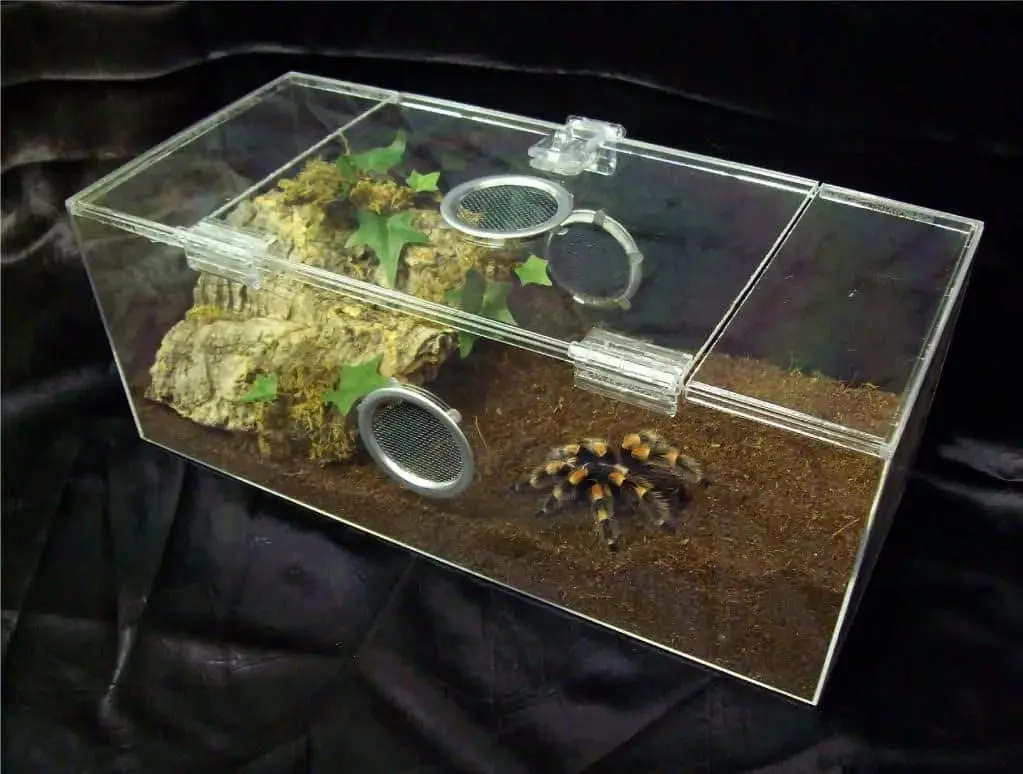
Essential decorations include hides, such as cork bark or artificial caves, which provide security and a place for the tarantula to retreat. Branches and climbing structures are beneficial for arboreal species. Live or artificial plants can add visual interest and help maintain humidity. Avoid using decorations with sharp edges or small parts that could be ingested. Always supervise your tarantula when adding or removing decorations to ensure it remains safe. Providing a well-decorated enclosure makes a world of difference.
Creating a Naturalistic Environment
Strive to create an environment that mimics your tarantula’s natural habitat. This can be achieved by using a combination of substrate, decorations, and appropriate lighting. For example, if your tarantula comes from a tropical environment, you will need to ensure that the enclosure has high humidity and is warm. For a desert species, a drier environment with lower humidity is needed. By providing a naturalistic environment, you can reduce stress in the tarantula and encourage natural behaviors. This will contribute to their overall well-being and make them thrive.
Choosing the Right Enclosure Material
The material of the enclosure is another critical factor to consider. The most common materials are glass and acrylic. Each has its pros and cons. Glass enclosures are durable and easy to clean, but they can be heavier and more prone to cracking. Acrylic enclosures are lighter, more transparent, and provide better insulation, but they can scratch more easily. The choice depends on your budget, personal preference, and the specific needs of your tarantula. Some keepers also use plastic enclosures, which can be a more affordable option, but they may not be as aesthetically pleasing or durable as glass or acrylic. Keep the safety of your tarantula in mind.
Glass vs Acrylic Enclosures
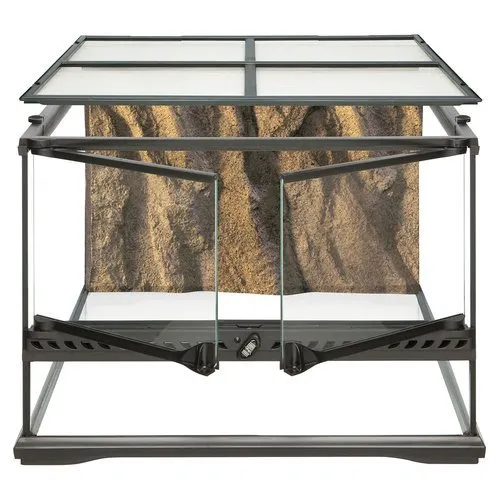
Glass enclosures are a classic choice, known for their durability and resistance to scratches. They also offer excellent visibility. Acrylic enclosures are lighter, often providing better insulation, which can help maintain stable temperatures. They are also more transparent, offering a clearer view of your tarantula. However, they are more prone to scratches. Consider factors such as your budget, the availability of enclosure sizes, and the aesthetic preferences when choosing between glass and acrylic. Think about how easy it will be to maintain for a good choice.
Enclosure Maintenance and Cleaning
Regular maintenance and cleaning are essential for maintaining a healthy environment for your tarantula. This includes removing uneaten food, molted exoskeletons, and any other waste products. The frequency of cleaning depends on the species and the size of the enclosure. Spot cleaning should be done regularly, and a full enclosure cleaning should be performed periodically. Ensure the cleaning products are safe and non-toxic for your tarantula. These regular practices will help keep the enclosure clean and hygienic for your pet.
Regular Cleaning and Maintenance Schedule
Establish a regular cleaning schedule to ensure the enclosure remains clean and hygienic. Spot clean the enclosure at least once a week, removing any visible waste. Perform a full enclosure cleaning, including replacing the substrate, every few months, depending on the size of the enclosure and the tarantula species. During cleaning, carefully remove the tarantula to a temporary holding container. Always wash your hands thoroughly before and after handling your tarantula or its enclosure. Proper and consistent maintenance is vital for your tarantula’s health and long-term well-being. The better care you take, the better your pet will feel.
